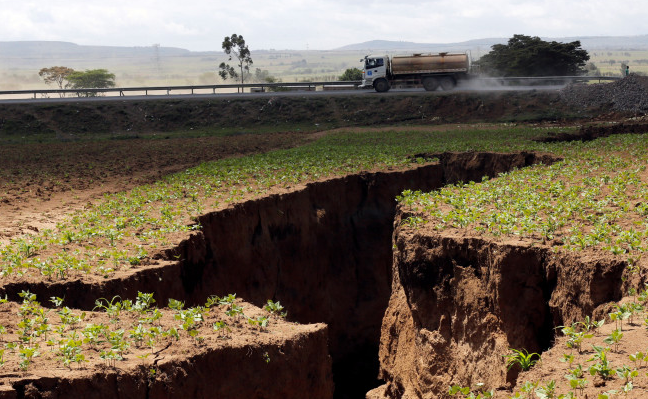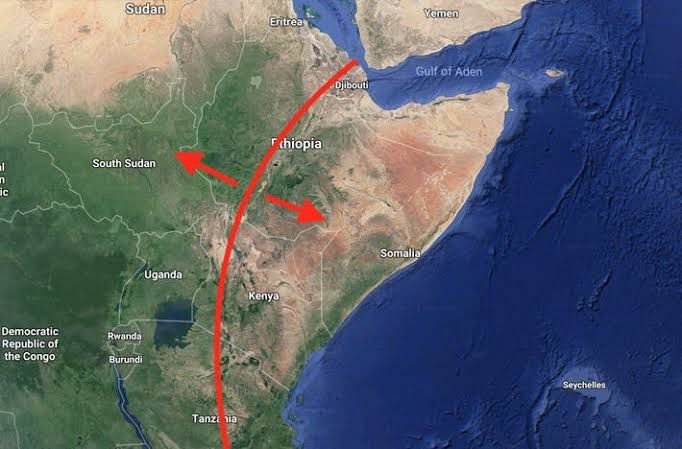The Earth beneath our feet is far from static; it is a dynamic and ever-changing landscape. The continents we inhabit are actually thin tectonic plates floating atop a churning sphere of hot rock. One of the most intriguing examples of this geological activity is happening in East Africa, where the continent is slowly splitting apart. Will Africa rip apart completely, and if so, when will it split?

The East African Rift System (EARS) is indeed a remarkable geological feature illustrating the dynamic nature of Earth’s crust. This rifting process is an example of divergent plate boundaries, where tectonic plates are moving away from each other.
TECTONIC MOVEMENT
The African continent’s gradual splitting is driven by the movement of tectonic plates. Specifically, the Somali Plate is moving away from the larger Nubian Plate, a process that will eventually create a new ocean basin. This divergence is part of a broader tectonic activity that also involves the Arabian Plate moving away from Africa.
EAST AFRICAN RIFT
The East African Rift is a prominent feature of this tectonic activity. For instance, the 56-kilometer-long crack in Ethiopia, which emerged in 2005, is a dramatic example of the rift’s surface manifestations. However, the rift system spans thousands of kilometers, extending from the Afar Triple Junction in the northeastern part of Africa down through Mozambique.
RATE OF MOVEMENT
The tectonic plates involved are moving at different rates:
- The Arabian Plate is separating from Africa at a rate of about one inch (2.5 cm) per year.
- The Nubian and Somali Plates are diverging at an average rate of 7 mm

GEOLOGICAL ACTIVITY
The rifting process leads to the thinning of the lithosphere, the rigid outer layer of the Earth. Consequently, this thinning causes volcanic eruptions and the formation of large faults, contributing to the creation of the greater Rift Valley. The region is characterized by dramatic landscapes, including deep crevices and elongated basins.
CONTROVERCIES
There is still debate among geologists about the precise mechanisms driving the East African Rift. The leading hypothesis involves mantle plumes—upwellings of abnormally hot rock within the Earth’s mantle—that cause the lithosphere to dome and stretch. However, other factors like the reactivation of ancient faults and regional stress fields also play a role.
FUTURE IMPLICATIONS
The rifting process is exceedingly slow on human timescales but significant over geological periods. Over millions of years, the continued divergence of the Somali and Nubian plates will widen the rift enough to allow ocean waters to flood in, creating a new ocean basin. This would result in a substantial reconfiguration of the African continent, with parts of Somalia, Kenya, Ethiopia, and Tanzania forming a separate landmass.

SUMMARY
While the complete separation of Africa due to the East African Rift System is an eventual certainty in geological terms, it is a process that will unfold over tens of millions of years, far beyond the immediate future. Thus, the dynamic nature of Earth’s crust will continue to shape the landscape, albeit at a pace imperceptible to human observation.

